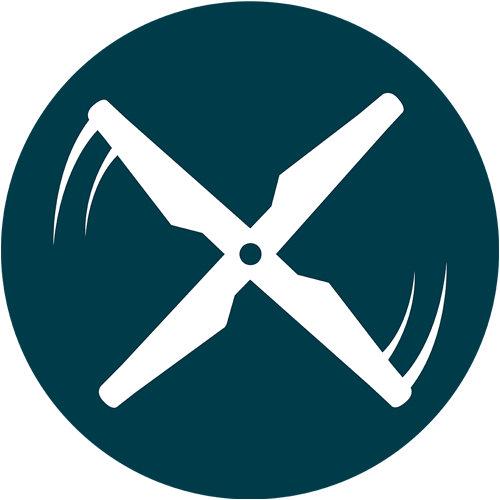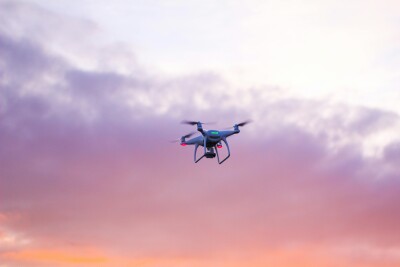The last decade has been an exciting one for the UAV industry. Technological advances in hardware and software have allowed drones to evolve exponentially. The widespread adoption of UAV technology across numerous industries has proven the efficacy of drones many times over.

Unlike some disruptive technologies which only benefit early adopters, the advantages of using drones can be realized by anyone willing to explore using them. Given the industry's growth, end users looking to bring UAV technology into their workflow can now develop in-house drone programs or outsource the work, sometimes known as Drones As A Service (DaaS).
If you are interested in exploring drones, deciding whether it is better to start your own program or hire someone outside your organization is one of the first decisions you will need to make. Building your own program requires a more significant investment in time and money but might be better in the long run. Hiring outside support is also worth considering as it is less expensive initially and lowers your liability.
Making the best decision for you and your organization starts with asking the right questions. Begin by assessing what your UAV needs are.
- What roles do you see drones performing in your workflow?
- Do you need specialized equipment such as thermal, multispectral, or LiDAR payloads?
- How often will you need to use drones?
- Do you have any in-house expertise related to drones?
- What resources (people, time, and money) can you dedicate to drone operations and upkeep?
Once you have collected the information needed to answer these questions, weigh your responses against the pros and cons related to in-house programs and DaaS providers. Let's look at the pros and cons of each option. Keep in mind that you may find a hybrid of the two is best suited for your needs.
In-House Drone Program
In addition to optimal design, in-house programs are much more responsive. If you have organic drones and pilots, you can utilize these resources as needed. When going through a third-party provider, the DaaS's availability will be a factor you'll need to deal with every time. If you are in an industry like construction, this could cause significant and costly delays.
While the pros of an in-house program can be highly advantageous, the cons are also worth considering. Cost is typically the primary reason end users decide to use DaaS providers over building their own program. Depending on the type of drone you need, your initial investment can easily be tens of thousands of dollars or even pass the six-figure mark. Along with the initial investment comes the cost of hiring commercial drone pilots and maintaining equipment.
Internal programs will also mean your organization will be responsible for all risks associated with UAV operations. The safety and legal risks of flying drones will be a liability you must be comfortable with. To mitigate these risks, you'll need to ensure your pilots are adequately trained, equipment is well maintained, and that you stay current on any changes to rules and regulations that affect your operation.
DaaS Providers
With DaaS providers, scaling your drone needs is usually much more manageable. For example, if you typically inspect five cell towers a week using drones and suddenly need to inspect 50 in the same period, this may be difficult for in-house programs to accomplish. DaaS providers can support this need and scale back the following week without straining your organization.
For some operations, legal exposure is an important consideration. As an industry, drones have proven themselves to be extremely safe. That being said, accidents can happen, and significant damages can be suffered depending on the nature of the incident. DaaS providers maintain much of the responsibility for accidents as the pilot is responsible for the drone and anything it does.
While lower costs and less liability may rank high for you and your organization, remember that rigid pricing structures and slower response times must be weighed against the advantages of using DaaS providers.
Most DaaS providers offer a menu of services, each with an associated cost. Others provide hourly rates that increase in direct proportion to the complexity of the work and the more specialized the drones needed to complete the work are. If you need something basic, such as a single aerial photograph of a site, you could pay much more than expected for a simple photograph.
Response times should also be factored into your decision. For example, let's say you are in the construction industry and need volumetric calculations of gravel stockpiles. Traditional ground-based survey teams in the area are booked for the next three weeks. DaaS providers are booked for the next two weeks. What would take 30 minutes to complete yourself if you had in-house drone capabilities now have you delayed for at least two weeks.
Examples such as this are why some organizations seek a hybrid solution. Using our volumetric calculation example from above, a hybrid solution might take the form of having a single drone on site for such occasions and a team member with the collateral duty of occasionally flying your drone in these situations. Outside of these types of situations, you would use DaaS providers when not in a time crunch.
Most operations will significantly benefit from using UAV technology. The decision to build your own program or outsource the work will vary based on your needs and resources. If you ask the right questions, collect the necessary data, and weigh the pros and cons, deciding which option is best for you should be effortless.
About the Author:
David Daly is an award-winning photographer/writer and licensed (FAA) Commercial sUAS pilot. A graduate of the United States Naval Academy, David is a former Marine Corps officer with a BS in Oceanography and has earned his MBA from the University of Redlands. He is the CEO of Vigilante Drones and the COO of Altitude University.
















Comments